When it comes to China tours in 2022 & 2023, what places are you expecting to go? If you are interested in Tibet, I would like to recommend this 15-day China tour with Mount Everest in 2022 & 2023 to you. You will first start this tour from Beijing to Xi’an, the two most famous ancient capital cities in China. You will enter the Forbidden City in Beijing to listen to the stories of the last two dynasties in Chinese history and visit the Terra Cotta Warriors and Horses Museum to admire the grand underground army of the first emperor of China. Then, you will go to Tibet to appreciate the magnificent Potala Palace in Lhasa and look up at the towering Mount Everest – the highest peak in the world. At last, you will arrive in Shanghai, one of the most international and bustling cities in China. Throughout this China tour to visit Mount Everest, you will have a panoramic view of China. Don’t hesitate any more and join us right now!

Welcome to Beijing, the capital of China! Your wonderful 15-day China tour with Mount Everest will start here. When you land in Beijing, our guide will hold your name sign and pick you up at the airport, and then you will be escorted to your hotel and have a comfortable rest.
Beijing is a city with a very long history of more than 3,000 years and a strong traditional cultural atmosphere. It was the capital city of the Ming and Qing dynasties. There are many places of interest in Beijing, including the Forbidden City, Tian’anmen Square, and the Great Wall. The ancient magnificent buildings in Beijing perfectly embody the unique Chinese classical style. Embracing the most world heritages in China, it is among the first batch of national historical and cultural cities. Beijing also has witnessed the great changes that have happened here since the end of the Chinese feudal regime. You should not miss the capital Beijing when you come to China. Let us enjoy this unforgettable China tour together.
This morning, you will have a delicious breakfast in the hotel. And then you will move to visit Tian’anmen Square, which is located on the central axis of Beijing. With more than 500 years of vicissitudes, Tian’anmen Square serves as the largest city square in the world today. It is located in the center of Beijing and on the south side of the Forbidden City. Many national symbolic and landmark buildings are located here, such as the solemn Monument to the People’s Heroes as well as the Chairman Mao Memorial Hall in the center, the National Flagpole in the north, the Great Hall of the People on the west side, and the National Museum of China on the east side. All these majestic buildings are of great significance to Chinese people. Various large-scale celebrations and ceremonies are also held in the square. The flag-raising ceremony held here every morning attracts countless tourists to come and pay their respects. Owing to its rich historical connotation, Tian’anmen Square has become a must-visit attraction for tourists from home and abroad.
Then, get ready to be amazed by the Forbidden City (closed each Monday), which is also known as the “Palace Museum”. Situated at the very center of Beijing, the Forbidden City has witnessed the rise and decline of the last two feudal dynasties, namely the Ming Dynasty (1368-1644) and the Qing Dynasty (1636-1912). It was the imperial palace with 24 emperors living here. The Forbidden City is known as one of the five largest palaces and it was listed as a “world cultural heritage” by UNESCO in 1987. The entire architecture of the Forbidden City is extremely magnificent and spectacular. With a total area of more than 720,000 square meters, the Forbidden City is the largest and the most complete palace complex in China and even in the world. The Forbidden City is surrounded by a rectangular city wall of 10 meters high and 3,400 meters long, with a 52-meter-wide moat outside the city wall. The four corners of the Forbidden City are equipped with four exquisite turrets, which are delicately constructed and look fascinating. They were used for lookout during the Ming and Qing Dynasties. The four turrets, the city wall, and the moat together constitute the strict defense system of the imperial palace.
For visitors who would like to appreciate old Beijing, a Hutong visit is an essential itinerary, which vividly incarnates Beijing’s history. Hutongs originated in the Yuan Dynasty (1271-1368), with a history of more than 850 years. At that time, the Hutongs mostly led to an east-west direction and the width of a Hutong generally did not exceed 9 meters. Since the Ming Dynasty, diagonal and irregular Hutongs have appeared. On both sides of the Hutongs stand the traditional quadrangle dwellings inhabited by Beijingers. A strong flavor of traditional Beijing life is distributed in every corner of the Hutongs. There is no hustle and bustle in the Hutongs, but friendly and harmonious neighborhoods. For tourists, the best way to visit the Hutong is to take a rickshaw, and the rickshaw driver may be happy to tell you something in-depth about old Beijing on your way. Listening to the driver’s introduction along the way and looking at the harmonious scenes in the Hutongs must be a pleasant experience. We will also visit a local family living in Hutong and feel the enthusiasm of old Beijing residents.
And the next station is the Summer Palace, located in the western suburb of Beijing. Since the 11th century, several royal gardens have been built in the surrounding area of the Summer Palace. By the end of the Qing Dynasty, the total area of these gardens reached more than 1,000 hectares. Such a large area of royal gardens is rarely seen in the world. As an imperial garden built by Emperor Qianlong in the Qing Dynasty, the Summer Palace is the pinnacle of Chinese classical gardens, with a total area of about 290 hectares. It is the most intact imperial garden in the world, which is known as the “Royal Garden Museum”. This garden, later rebuilt by Empress Dowager Cixi by means of embezzling naval funds, is mainly composed of the Longevity Hill and Kunming Lake. There are also a lot of ancient buildings in the garden, such as the Jade Ripples Hall, Hall of Happiness and Longevity, and Hall of Benevolence and Longevity, where Qing emperors and the royal family used to live in hot summer days. Taking a boat tour on the Kunming Lake to enjoy the fascinating landscapes will be an unforgettable experience for you.
Options:
1. Peking Roast Duck Dinner is recommended to you if you would like to taste authentic Beijing food. It is a good opportunity for you to enjoy the world-renowned Peking Roast Duck. Eating Peking Roast Duck seems to be one must-do thing you are supposed to do while in Beijing.
2. Watching a Kungfu Show at Red Theater is also a good choice if you are interested in Chinese Kung Fu, which lasts from 19:30 to 20:50 every evening.
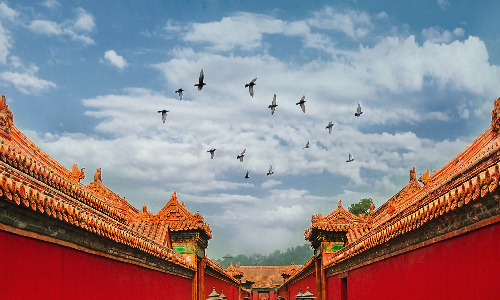
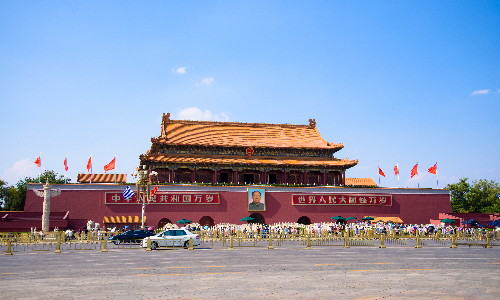
This morning, we will take you to visit the Temple of Heaven. The Temple of Heaven is an exclusive altar used by the emperors of the Ming and Qing Dynasties to worship heaven and pray for a bumper year. It was built in 1420, covering an area of about 2.73 million square meters. The Temple of Heaven is the largest ancient ritual building complex even in the world. It is an outstanding and unparalleled architectural masterpiece whether on architectural style or on aesthetics. It consists of the Hall of Prayer for Good Harvests in the north and the Circular Mound Altar in the south. You will follow your guide to have a look at its main buildings and learn about the heaven-worshiping culture of ancient China. Today the Temple of Heaven has become a park for local people to relax. There are towering trees of hundreds of years everywhere in the Temple of Heaven and the air is fresh. It is a good place for exercise and leisure activities. People who exercise in the morning can be seen everywhere. Most of them are seniors who are Tai Chi enthusiasts. Many foreign tourists often like to interact with the elderly and learn Tai Chi with them. If you are interested in Tai Chi, you can also learn some simple moves. You will find lots of fun in it.
Then we will drive northwest for about 2 hours (about 78 kilometers) to visit the Badaling Great Wall. Badaling Great Wall is a must-visit for a Great Wall tour since the Great Wall is a must-see attraction for a China tour. As an important part of the largest defensive project in ancient China, Badaling Great Wall typically shows the majestic and steep features of the Great Wall. As a protective barrier to Beijing, the Badaling Great Wall stretching along high mountains was hard to be broken through during the war. It is also a challenge for people to climb up the Great Wall on foot. Therefore, there is an old saying goes, “One who fails to reach the Great Wall is not a hero.” However, equipped with an advanced cableway, the Badaling Great Wall is easy to climb for tourists today. You will take a cable car to climb up and admire its grandness.
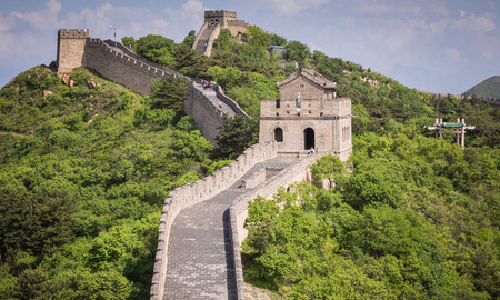
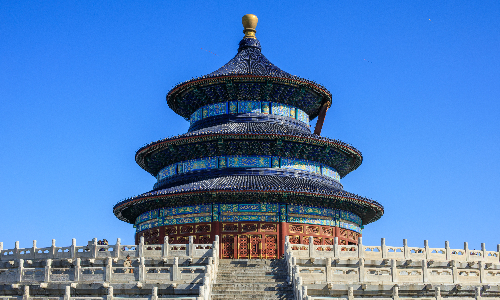
 Xian
Xian Today you will take the estimated train G571 09:22/15:07 to Xi’an, an ancient city boasting a rich history. Our guide will meet you at the train station and escort you to your hotel. We hope you will have a good rest and embrace the following Xi’an tour. Countless cultural relics and historical sites have demonstrated to all visitors the glory that Xi’an once had and its profound and rich historical and cultural charm.
This morning, you will have a happy time in the Terra Cotta Warriors and Horses Museum. The site of the Terra Cotta Warriors and Horses is also known as “The Eighth Wonder of the World”. As a kind of ancient tomb sculpture, these figurines appeared as funerary objects in ancient tombs. The Terra Cotta Warriors and Horses are made into burial objects in the shape of chariots, horses, and soldiers. The museum for displaying the Terra Cotta Warriors and Horses covers an area of 16,300 square meters, divided into three parts named No. 1 Pit, No. 2 Pit, and No. 3 Pit. There, you can see more than 7,000 pottery warriors and horses. They are standing row after row, forming a magnificent and imposing lineup. Most of the warriors wear armors, seeming to be ready for battle. Some were armed with bows in their hands and bronze arrowheads on their backs when they were first unearthed, seeming to be archers. The figurines’ appearances, expressions, and even eyebrows are all unique. You will definitely admire the exquisite carving techniques of ancient craftsmen. The Terra Cotta Warriors and Horses Museum has received nearly 70 million visitors from home and abroad since it was officially opened in 1979, including more than 200 heads of state. It is really a must-visit attraction in Xi’an.
Then you will go to the Big Wild Goose Pagoda. The Big Wild Goose Pagoda, which has a history of more than 1,300 years, is the symbol of Xi’an. It is a piece of material evidence that the architectural form of ancient Indian Buddhist temples was introduced into ancient China with Buddhism and integrated into Chinese culture. At the foot of the Big Wild Goose Pagoda, there is a large-scale musical fountain in the North Square of the Big Wild Goose Pagoda for you to visit. It is currently the largest musical fountain in China and even in Asia. The colorful lights and the ever-changing fountain show in the square add infinite charm to the Big Wild Goose Pagoda, attracting a lot of visitors gathering in the square every day.
Then you will come to visit the Ancient City Wall. The Ancient City Wall is also known as Xi’an Ming Dynasty City Wall. The city wall includes many military facilities such as a moat, suspension bridges, and watchtowers, forming a tight and complete military defense system. Touring the Ancient City Wall of Xi’an is of great significance to understand this ancient military defense system as well as the ancient architectural art. As the largest and best-preserved ancient city wall in China, it serves as a wordless history book in Xi’an, which has witnessed the huge changes in Xi’an. As an important part of Xi’an’s Ancient City Renaissance Plan in 2004, the Ancient City Wall together with the region within it has gradually become the core of Xi’an and also become a business card of Xi’an to the world. The Xi’an City Wall International Marathon is held here in November every year, and it has attracted marathon enthusiasts from more than 60 countries and regions. You can also take a walk on the Ancient City Wall and overlook the streetscape of Xi’an. The Ancient City Wall has a total length of 13.74 kilometers, and if you want to take a round trip, cycling is a good choice.
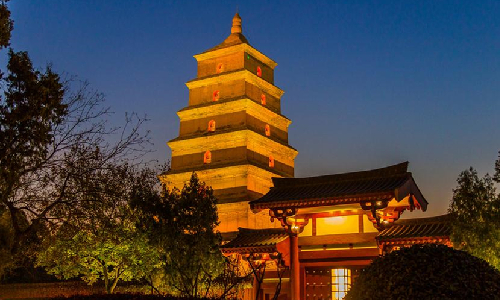
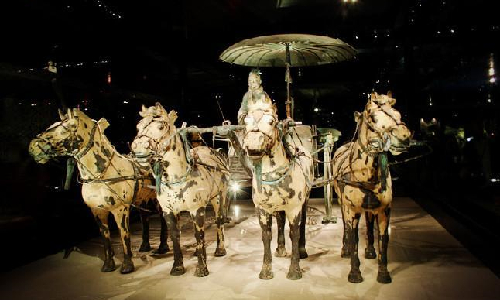
 Lhasa
Lhasa This morning, you will take the estimated flight MU2335 11:10/14:25 to Lhasa. Our guide will pick you up at the airport and take you to the local hotel. Hope you will have a nice rest.
After breakfast, you will go to visit the Potala Palace. Tibet is a lifelong dream for many travelers, and the Potala Palace is a landmark building in their dreams. It was the king of Tubo Kingdom (633-842) – Songtsen Gambo that originally built this palace-like building complex to marry Princess Wencheng from the Tang Dynasty (618-907). Being regarded as the “pearl on the roof of the world”, the Potala Palace is the highest and the most majestic building in the world. It is regarded as the most significant symbol of Lhasa and even Tibet. The Potala Palace is also the center of Tibet’s politics and religion. The entire palace has a distinctive Tibetan style, with a height of more than 200 meters. The main building is divided into two parts—the Red Palace at the center and the White Palace as two wings. The White Palace is named for the white exterior wall and it is the place where Dalai Lamas once lived and engaged in political activities. The Potala Palace has preserved a large number of historical relics, including pagodas, statues, murals, and scriptures. Among them, there are eight pagodas, which are magnificent and decorated with gems. Here, you can have a soul baptism in a holy atmosphere.
You will have an authentic lunch in the local restaurant. Then the Jokhang Temple is your next destination. Located in the center of Lhasa, the Jokhang Temple is a Tibetan Buddhist temple with a history of more than 1,300 years. There is an old saying goes, “The Jokhang Temple came into being first, then the city of Lhasa.” It gives the Jokhang Temple a supreme status in the hearts of Tibetans. That’s why the Jokhang Temple is always crowded with countless devout worshippers. It is worth mentioning that in the Jokhang Temple, there is the Shakyamuni Statue that Princess Wencheng brought from Chang’an (ancient Xi’an) in the Tang Dynasty. When boarding the platform on the third floor of Jokhang Temple, visitors will have a general view of the Potala Palace and the Jokhang Temple, which would be a fascinating experience.
Then you will visit Barkhor Street. Barkhor Street is one of the most prosperous commercial streets in Lhasa, built around the Jokhang Temple. The street completely preserves the traditional appearance and lifestyle of ancient Lhasa. There are several small lanes in Barkhor Street for you to walk around. Sit on the benches on both sides of the street when you are tired, and feel the piety of the Tibetan Buddhist pilgrims who are chanting while walking along the street clockwise. There are many shops on the street, selling various Tibetan costumes and handicrafts. It is also a good place to taste traditional Tibetan cuisines and snacks. All kinds of Tibetan restaurants, tea houses, and other shops with Tibetan features are waiting for you to explore!
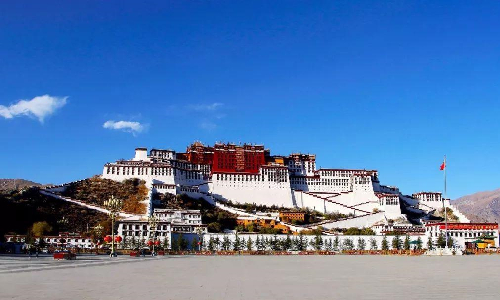
After breakfast, you will continue to visit the Drepung Monastery. With a construction area of 390,000 square meters, Drepung Monastery is the largest among the six major monasteries of the Gelug Sect of Tibetan Buddhism in Tibet. Together with Ganden Monastery and Sera Monastery, it is considered as one of the “three major monasteries in Lhasa”. The main hall of the monastery in the center is majestic, with 183 columns and exquisite carvings on the columns. And it can accommodate 8,000 people for chanting at the same time. After entering the gate of the Drepung Monastery, you will go up the stairs to see the main buildings. On halfway, there is a small platform, where visitors can overlook the views below it. Continuing to go upward, you will see a Buddha painted on a rock on the left in the distance, and the iron shelf at the back is for displaying a huge Buddha painting during the Sho Dun Festival. Every year during the Sho Dun Festival, Drepung Monastery will hold a grand ceremony, hanging a giant Buddha painting on the iron shelf, which will attract a great number of believers and tourists to worship and pray for blessings.
This afternoon, you will come to visit the Sera Monastery. Sera Monastery is located at the foot of a mountain in the northern suburbs of Lhasa. It is known as one of the three major monasteries of the Gelug Sect of Tibetan Buddhism, together with Drepung Monastery and Ganden Monastery. It is the latest one of the three major monasteries, built in 1419 during the Ming Dynasty (1368-1644). There were more than 8,000 Buddhist monks in its heyday. The Cuoqin Hall is the largest hall of Sera Monastery, and it is a must-see attraction when you visit here.
Then you will move to visit the Norbulingka Park, which is a typical Tibetan-style garden located in the western suburbs of Lhasa. Founded in the 1740s, it is a national key cultural relic protection unit. Covering an area of 360,000 square meters, the garden boasts 370 rooms of different sizes. In the garden, there are many precious flowers transplanted from other domestic places and imported from abroad, so it has been called “the botanical garden on the plateau”. Norbulingka Park is also the garden with the most historical relics among the man-made gardens in Tibet. Therefore, it is also known as the “Garden of Treasures”.
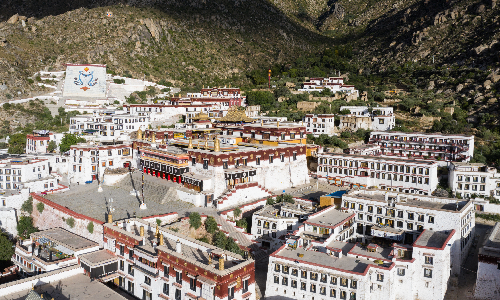
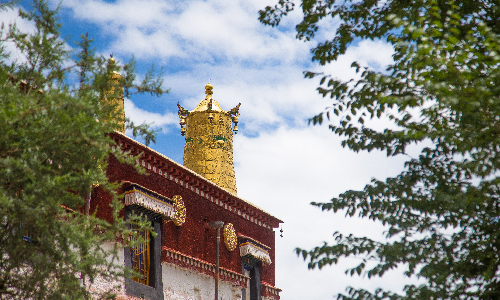
 Gyantse
Gyantse Shigatse
Shigatse This morning, we will drive west for about 5 hours (about 273 kilometers) to Shigatse. Passing by Gyangtse, we will stop to visit Yamdrok Lake. Covering an area of 675 square kilometers, Yamdrok Lake is one of the three holy lakes in Tibet (including Namtso Lake and Lake Manasarovar). There are 21 small islands in the lake. The largest one is about 18 square kilometers, which can accommodate five or six households to live, and the smallest one is only about 100 square meters. Yamdrok Lake has lucid water and is rich in water plants. Many kinds of migratory birds, such as swans, herons, and gulls, live on these small islands, making it the largest waterfowl habitat and a paradise for wild birds in Tibet. It is also a natural “fish warehouse” with many types of plankton in the lake. There is also a fertile plateau pasture around it. In addition, the Yanghu Power Station, the largest hydropower station in Tibet as well as the highest pumped storage power station in the world, is also located here.
Then you will move to walk around the Gyangtse Old Street. Boasting a history of more than 600 years, Gyangtse Old Street is located in the north of Gyangtse, with an altitude of 4,020 meters. As a trade distribution center, the street is scattered with various shops, stalls, and handicraft workshops. Tibetan-style buildings stand in lines, and the special architectural styles, residence upstairs and shop downstairs as well as shop at the fore and yard at the back, combine residence, commerce and entertainment together. The old street is quiet and simple. You can see many leisurely men, women and children sitting in the narrow alleys. Some are weaving wool and spinning, some are drinking tea, and children are playing. Such a scene will make you feel how comfortable life is!
After visiting these attractive places, we will continue driving to Shigatse. Upon arriving in Shigatse, you will be transferred to a local hotel.
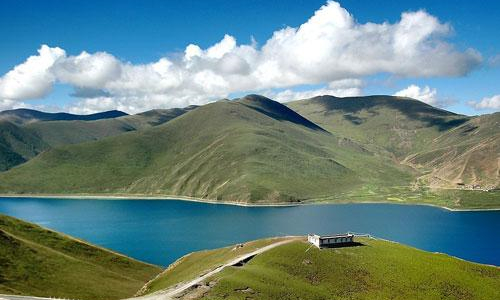
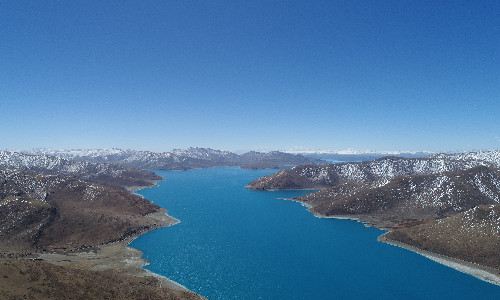
 Dingri
Dingri Tashilunpo Monastery is a must-see attraction in Shigatse for you. As the largest monastery in this region, Tashilhunpo Monastery covers an area of 150,000 square meters with a circumference of more than 3,000 meters. There are more than 3,600 rooms in the monastery with 57 rooms for monks to live in, which are neatly arranged. Many magnificent buildings and scenic spots are waiting for you to explore, regarding the Stupa of the Tenth Panchen, the Kelsang Temple, and the biggest Bronze Buddha Statue. The murals in Tashilhunpo Monastery are also very distinctive, with various forms and bright colors. They are the masterpieces of Buddhist art.
Then, we will drive southwest for about 5 hours (about 268 kilometers) to Dingri. When passing by Sakya, we will stop to visit the Sakya Monastery. Boasting a colossal collection of numerous Tibetan Buddhist scriptures, murals, and Buddhist paintings, the Sakya Monastery is reputed as the “Second Dunhuang”. There are more than 3,000 exquisite murals in the Sakya Monastery with the themes widely involving in religion, history, culture, and social life, which is also an enjoyment for all visitors.
Then after visiting the Sakya Monastery, we will go on our journey to Dingri. Upon arriving in Dingri, you will be transferred to a local hotel.
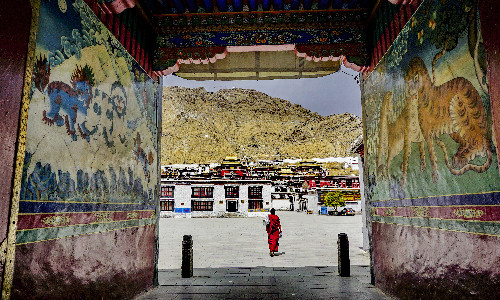
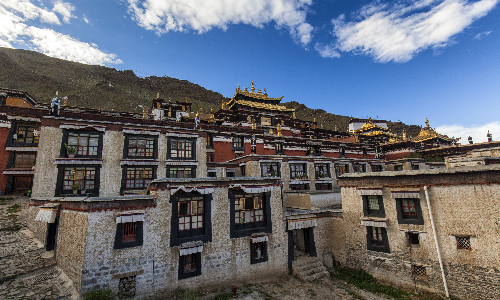
 Mount Everest
Mount Everest Shigatse
Shigatse Today, we will drive you to visit Mount Everest. Covered with snow all year round, the majestic and holy Mount Everest attracts countless mountaineering enthusiasts. The towering Mount Everest has always been a holy place where humans want to prove their climbing ability. Since the first successful ascent to the summit of Mount Everest on May 29, 1953, many climbers from all over the world have left their footprints on the summit of Mount Everest. Coming here, looking at the holy Mount Everest, and watching the beautiful sunrise will be a worthwhile trip.
Then your guide will take you to visit the Rongbuk Monastery and enjoy the beautiful scenery. It is located at the end of the Rongbuk Glacier at the foot of Mount Everest. Situated at about 5,154 meters above sea level, the Rongbuk Monastery is the monastery with the highest altitude in the world. Now, Rongbuk Monastery has become a base camp for climbing Mount Everest from the northern slope. Looking south from here, you can see Mount Everest resembles a huge pyramid. When in fine weather, you can see a cloud of milky white smoke on the top of the mountain, like a white flag flying over Mount Everest, which is a great wonder in the world. Then we will drive you back to Shigatse.
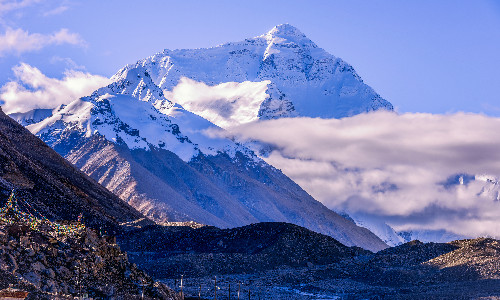

 Lhasa
Lhasa After breakfast, we will drive you back to Lhasa. One thing needed to mention is that we will pay a visit to a Tibet local family. Visiting a local Tibetan family and having dinner with local people can help you to better understand the local culture and learn more about the history of Tibet and Lhasa, which will fulfill your journey and must be a meaningful experience. When visiting a local family, remember to let the oldest person go first when walking together. Another thing needed to mention is not to touch the heads of Tibetans with your hands. Then you will be taken to a local hotel and have a nice rest.
 Shanghai
Shanghai After lunch, you will take an estimated flight TV9881 09:25/15:30 to Shanghai. Your Shanghai guide will hold your name sign and wait for you at the airport. After meeting and greeting, our guide will take you to the hotel and help you check in. Today’s Shanghai is not only China’s significant technology, trade, finance, and information center, but also a place where world cultures gather. Shanghai has developed into an international metropolis waiting for you to discover its charm.
After breakfast, we plan to take you to the Jade Buddha Temple. The Jade Buddha Temple got its name because of the Jade Buddha enshrined in the temple. It is one of the top ten tourist attractions in Shanghai. Although located in a prosperous urban area, the temple is hailed as a pure land in the bustling city. It covers an area of about 7,700 square meters, with a total construction area of 8,856 square meters. The architect of the Jade Buddha Temple inherited the temple style of the Song Dynasty (960-1279). On the central axis, there are three halls, the Hall of Heavenly Kings, the Great Buddha’s Hall, and the Jade Buddha Hall. In the Jade Buddha Temple, there are also many precious Buddhist classics and cultural relics.
Then we will move to visit the Yu Garden (closed each Monday), which was originally a private garden. It was built in the Ming Dynasty (1368-1644), boasting a history of more than 440 years. In the Yu Garden, there are more than 40 ancient buildings such as the Sansui Hall, Huijing Tower and Deyue Hall, as well as rockeries and ponds. When you stroll around it, slowly savor the exquisite designs and carvings in the garden with a laid-back and quiet state of mind. It will be a very relaxing experience on your Shanghai tour.
The next destination is the Shanghai Oriental Pearl TV Tower. Built on October 1, 1994, the tower has been one of Shanghai’s landmark buildings, which integrates urban sightseeing, fashionable catering, shopping, and historical exhibitions. It is the sixth tallest tower in Asia as well as the ninth tallest tower in the world. There are 5 sightseeing floors in the Oriental Pearl TV Tower, which makes it one of the best places to have a bird’s eye view of Shanghai.
The Bund is located on the bank of the Huangpu River in the Huangpu District of Shanghai. It is a Chinese historical and cultural area and a must-see attraction for tourists visiting Shanghai. Known as the World Architecture Exhibition, it displays 52 classical buildings with different styles. It is one of the important landmarks of Shanghai.
Nanjing Road is also a must-see place in Shanghai. At a glance, modern buildings are mixed with old European buildings, which is unique. You can also see a small version of the old tram running through the Nanjing Road, which brings you the taste of old Shanghai. Nanjing Road is one of the most prosperous commercial streets in Shanghai. It has been a gathering place for department stores as early as the 20th century. Nowadays, there are still century-old department stores such as Hualian Commercial Building and Yong’an Department Store, as well as large fashionable shopping centers such as New World City and Henderson Celebrity Shopping Center. Nanjing Road has been honored as “a paradise for shopping lovers”.
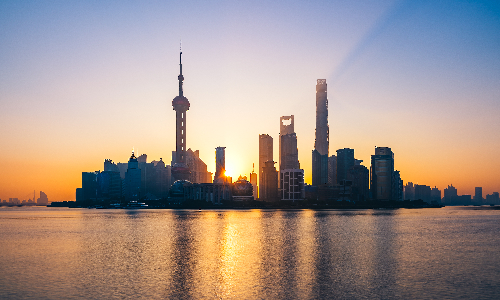
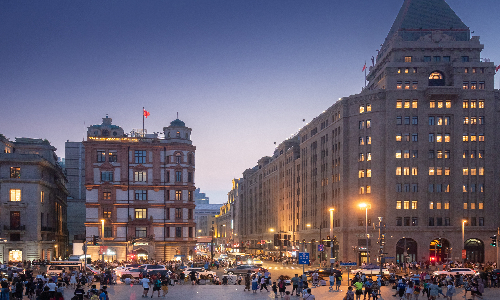
Today is time for us to say goodbye. Our guide will pick you up at the hotel and send you to the airport according to your flight schedule. You will go back to your sweet home, and your memorable China tour will end here. We hope you have spent an unforgettable time here. Hope to serve you again in other cities of China!
Author: Hao Ami
Proofreader: Vivian Zhou
| City | Five Star hotel list | Four Star hotel list |
|---|---|---|
| Beijing | Sunworld Dynasty Hotel Beijing Wangfujing | Sunworld Hotel Wangfujing |
| Xi'an | Tianyu Gloria Grand Hotel Xi'an | Sunworld Dynasty Hotel |
| Lhasa | Shangri-La Hotel, Lhasa | Thangka hotel |
| Shigatse | Guest House | Guest House |
| Other cities in Tibet | Guest House | Guest House |
| Shanghai | Ocean Hotel Shanghai | Courtyard by Marriott Shanghai Central |
 |
![]() About your child or infant, please contact us for a discounted price.
About your child or infant, please contact us for a discounted price.



We started with a few days in Beijing & ended in Shanghai, from where we visited the Forbidden City and Great Wall. In between we visited Terra Cotta Warriors Museum, Panda Base, Shanghai Disneyland.

We had a wonderful holiday in China which will remain long in the memory. China is a breathtakingly beautiful country full of splendid temples and palaces, mountains and rivers, peaceful rural scenes and bustling shopping streets.
 QUICK ENQUIRY
QUICK ENQUIRY